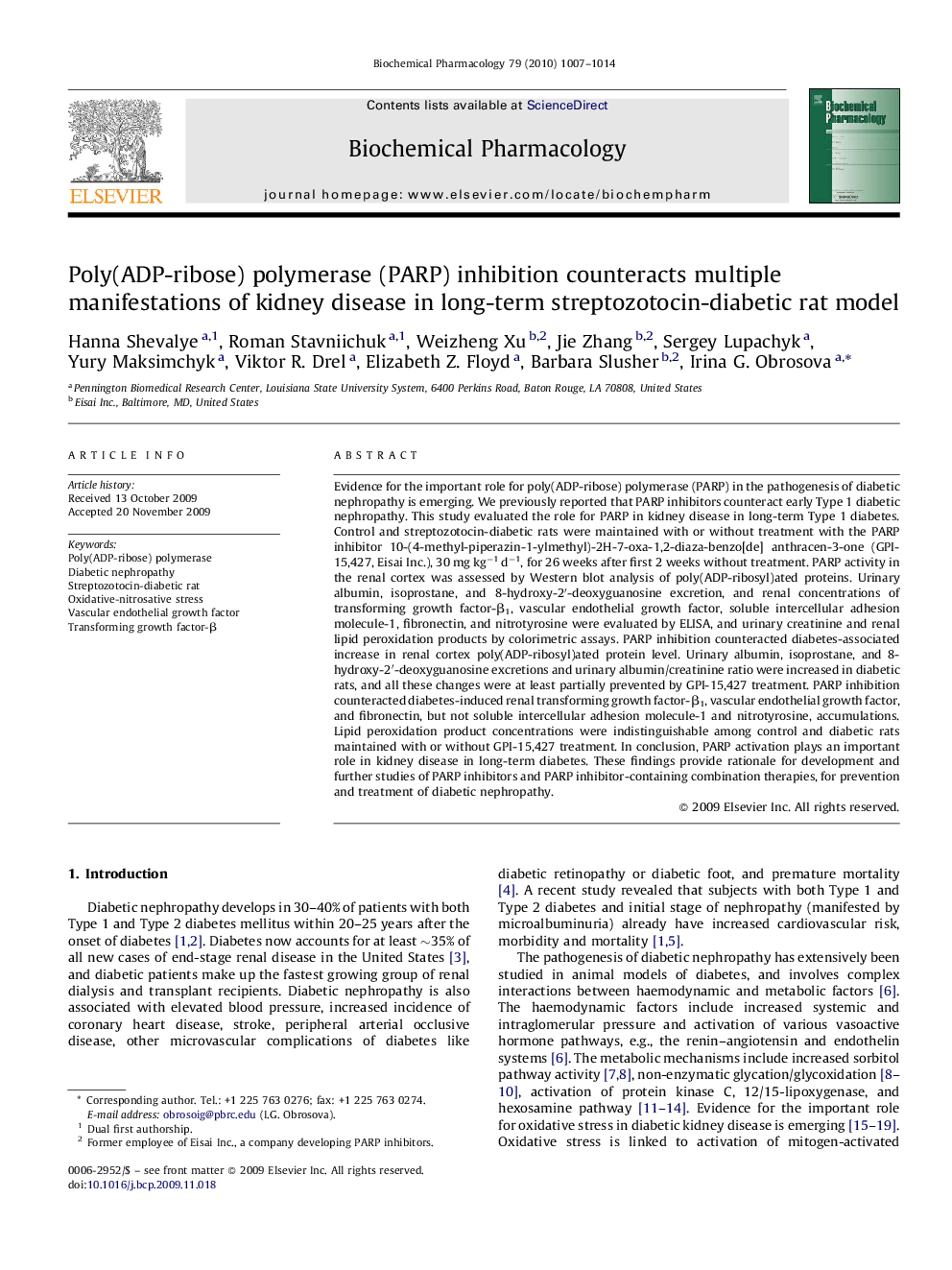| کد مقاله | کد نشریه | سال انتشار | مقاله انگلیسی | نسخه تمام متن |
|---|---|---|---|---|
| 2513715 | 1118431 | 2010 | 8 صفحه PDF | دانلود رایگان |

Evidence for the important role for poly(ADP-ribose) polymerase (PARP) in the pathogenesis of diabetic nephropathy is emerging. We previously reported that PARP inhibitors counteract early Type 1 diabetic nephropathy. This study evaluated the role for PARP in kidney disease in long-term Type 1 diabetes. Control and streptozotocin-diabetic rats were maintained with or without treatment with the PARP inhibitor 10-(4-methyl-piperazin-1-ylmethyl)-2H-7-oxa-1,2-diaza-benzo[de] anthracen-3-one (GPI-15,427, Eisai Inc.), 30 mg kg−1 d−1, for 26 weeks after first 2 weeks without treatment. PARP activity in the renal cortex was assessed by Western blot analysis of poly(ADP-ribosyl)ated proteins. Urinary albumin, isoprostane, and 8-hydroxy-2′-deoxyguanosine excretion, and renal concentrations of transforming growth factor-β1, vascular endothelial growth factor, soluble intercellular adhesion molecule-1, fibronectin, and nitrotyrosine were evaluated by ELISA, and urinary creatinine and renal lipid peroxidation products by colorimetric assays. PARP inhibition counteracted diabetes-associated increase in renal cortex poly(ADP-ribosyl)ated protein level. Urinary albumin, isoprostane, and 8-hydroxy-2′-deoxyguanosine excretions and urinary albumin/creatinine ratio were increased in diabetic rats, and all these changes were at least partially prevented by GPI-15,427 treatment. PARP inhibition counteracted diabetes-induced renal transforming growth factor-β1, vascular endothelial growth factor, and fibronectin, but not soluble intercellular adhesion molecule-1 and nitrotyrosine, accumulations. Lipid peroxidation product concentrations were indistinguishable among control and diabetic rats maintained with or without GPI-15,427 treatment. In conclusion, PARP activation plays an important role in kidney disease in long-term diabetes. These findings provide rationale for development and further studies of PARP inhibitors and PARP inhibitor-containing combination therapies, for prevention and treatment of diabetic nephropathy.
Figure optionsDownload as PowerPoint slide
Journal: Biochemical Pharmacology - Volume 79, Issue 7, 1 April 2010, Pages 1007–1014